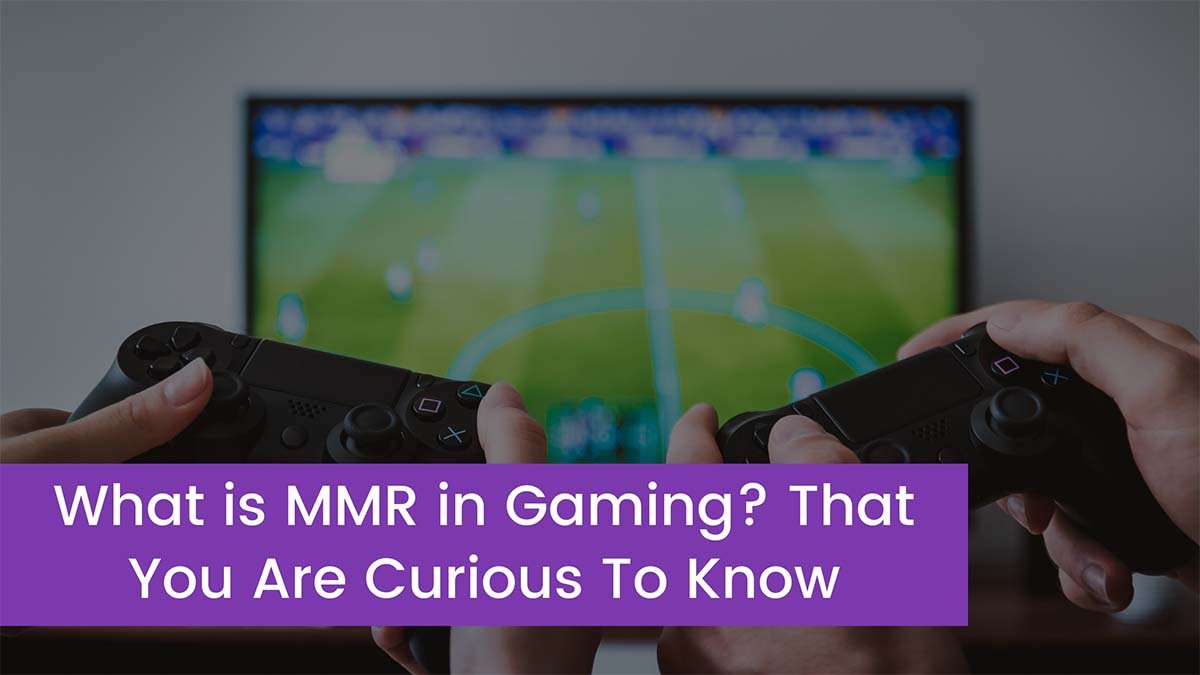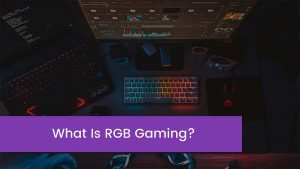MMR stands for Matchmaking Rating, and it is a very comprehensive phrase that isn’t limited to League of Legends. It’s a number that determines each player’s skill level. This number is utilized in a wide range of online games for matchmaking and team selection.
Winning raises the MMR, whereas usually losing lowers it. The different MMR levels are often designated with distinct ranks in competitive settings. Many games, for example, include competitive ranks such as Bronze, Silver, Gold, Platinum, Diamond, Masters, and Grand Masters, with each rank indicating a different range of MMR levels.
Said, it is a number that informs the system of your position concerning other people. MMR is commonly used to identify people and place players with the same MMR in the same match, ensuring that the game is even.
An MMR system, when implemented properly, should make games more accessible and enjoyable for all players, regardless of ability level.
Players can obtain seasonal ranking medals depending on their MMR using Ranked Matchmaking. On the world Leaderboards, the players with the best ratings are listed.
How can we determine MMR?
While the process for calculating your MMR differs slightly from game to game, the fundamentals are quite consistent. A series of placement matches determines your initial MMR, which is then updated based on your win/loss ratio and your in-game activity level at the higher rankings.
Matches for competitive placement:
A player’s MMR is normally a publicly visible statistic determined through a series of placement matches in competitive modes. You will not be connected to a particular rank throughout these placement matches.
Instead, the matchmaking algorithm will place you in various ranked games and utilize that information to determine where you belong in the competitive ecosystem of the game.
If you win a placement match, the system will match you up with more difficult opponents. They will place you against easier opponents if you lose your placement matches.
While games consider criteria other than your win/loss record, the most crucial part of moving up is winning. Your MMR will decline if you have a great game as a player, but your team still loses.
The majority of competitive games have multiple seasons of play. Depending on the game, a competitive season might last anywhere from two to three months. After the end of the competitive season, every player’s rank may be lost, and they will have to play their placement matches all over again at the start of the following season.
While every gamer must “rerank” every season, previously ranked players do not always begin with a clean slate. Soft resets are only performed during placements in games like Overwatch, League of Legends, and Rocket League.
So, unless your placement matches go extraordinarily well or terribly, you may expect to be placed where you were at the end of the previous season.
MMR decay
Most recent ranking algorithms take MMR decay into account. MMR decay is essentially a slow, constant loss in rank for high-ranking players who take too long off from the game.
If you take a few weeks off after reaching Grand Master status in a game, you will return to an account that is no longer in the Grand Master division.
While MMR decay may appear to be a problem, it is necessary for high-level players. This approach ensures that everyone in the higher tiers is involved in the game.
Because there are fewer people in each rank as you advance up the ranks, having active players in your top-ranked positions is critical.
This can lengthen matchmaking periods because fewer players are at your level to match with you. If many of the highest-ranked players never play the game, queue times would be considerably longer.
MMR degradation is also beneficial to players who take extended pauses. If you are a high-ranking CS: GO player and take just a few months off, you will almost certainly not be at the same skill level when you return.
Automatic decay can help you ease back into the game by adjusting the match difficulty to an acceptable level.
MMR decay, on the other hand, has a few drawbacks. For example, in 2019, Overwatch reduced MMR decay for Masters and Diamond-level players because some players complained that keeping their position was too burdensome.
However, the advantages of a decay system outweigh the disadvantages in most cases.
Climbing the ladder
After you’ve finished your initial placement, you can begin grinding. You should theoretically keep your current MMR rating if you win and lose an equal amount of games. Your MMR rating will begin to rise if you win multiple games in a row. It will plummet if you lose numerous games in a row.
When you reach specific milestones, you will be promoted. For example, when you hit 1410 MMR in League of Legends, you will be promoted to the Gold division, where you will remain until you reach 1720 MMR, which is the start of the Platinum rank.
Instead of rigging the MMR system, you should focus on developing your in-game fundamentals if you want to climb the ladder fast. While players may lose games for various reasons, when it comes to their MMR, they tend to settle in roughly where they belong.
So, if you want to advance in your career, the best way to do so is to work hard to enhance your talents and add value to your team.
The Smurf Affair
Those have tried to take advantage of MMR systems since the beginning, purposefully tanking their MMR to go against easier opponents.
Smurfs purposefully throw placement matches until they are pitted against opponents who are significantly lower ranked than they are. Then they have a field day overpowering folks who aren’t as skilled as they are.
Smurfs wreak havoc on the players they encounter. It’s not fun to get ripped apart by a far more skilled opponent. Smurfing is a huge problem in the lower ranks of every major competitive game, including Overwatch, League of Legends, and Rocket League.
Smurfing is unethical and contradicts the MMR system’s fundamental design. Smurfing is extremely difficult to control. Because there are various reasons why a player may be under-leveled, game makers cannot automatically conclude that a good player is a smurf and ban them.
Even if a player is identified as a smurf and their account is banned, the smurf can establish a new account and resume the process.
Smurfing is a problem that is exacerbated in free-to-play games because it is free to create a new account with no competitive history.
Smurfs rarely face significant consequences in free games because they aren’t required to buy the game again if they continue to be abusive. However, there are still a lot of smurfs in the premium games, indicating that there are more factors at play than just price.
Distribution Estimates
Valve
Valve distributed the following MMR distribution for unranked solo matchmaking throughout the total user population in December of 2013. [2] It’s impossible to say how much these numbers have changed since 2013.
Percentile denotes the proportion of players who have a lower MMR than the MMR in question. A player with 3200 MMR, for example, would be more talented than 90% of the population.
OpenDota
Following that, OpenDota’s research of public player profiles revealed a higher average MMR of around 3100. This figure is thought to be biassed upwards because it is widely recognized that newer and less competent players are less likely to reveal their MMR publicly and, hence, are not included in the data analysis.
Updating
After each match, the MMR for games played in the solo queue will rise or decrease by 30 MMR. 20 MMR will be increased or decreased depending on which games are played in the party queue.
MMR can not be changed if:
- A non-partying member of your team prematurely abandons a typical match.
- It has been determined that the network is in poor condition. For this to work, a message must occur in the game.
MMR can be changed if:
- Any player of your team that arrives late abandons the game.
- In whatever manner, any player of your party abandons.
- Regardless of any abandons, you are playing a ranking match.
MMR > RANK: BIGGER LP GAINS, SMALLER LP LOSSES
When your MMR is much higher than your rank, the algorithm will try to drive you up the ladder by rewarding you with more LP when you win and deducting less LP when you lose.
MMR almost always happens at the start of each new ranked season, as you’ll start at a lower rank than when you finished the previous season. Your MMR, on the other hand, remains unchanged; therefore, winning will propel you swiftly up the ranks.
However, once your MMR and rank have stabilized, you’ll notice lesser LP gains and larger losses until the two are roughly equal. You’ll need to win a lot of games in a row at that time to convince the system that you deserve a higher level. If you win enough, you’ll start receiving larger LP prizes, which will help you attain your true level faster.
MMR will happen until your wins and losses begin to level out, at which point the algorithm will determine that you have achieved the correct rank, and your LP gains and losses will be equal.
MMR RANK: SMALLER LP GAINS, BIGGER LP LOSSES
Despite our best efforts to provide both sides a 50 percent chance of winning each game, your victory record may not reflect this. And that’s perfectly fine! There are a variety of reasons why you might be experiencing a cold spell.
Maybe you’ve been experimenting with a new champion or position, maybe you’re rusty after a lengthy absence, or it’s just poor luck.
Multiple losses in a row, in any scenario, indicate to our algorithm that your rank and MMR are no longer in sync. To close the gap, you’ll lose more LP with each defeat until your winrate equalizes.
Consider taking a break or switching to a more comfortable champion if you find yourself in this predicament.
Conclusion
MMR systems are a huge help to video games in general. They make the game more enjoyable for players of all skill levels and provide a clear feeling of rank and progression for serious players. While MMR systems aren’t ideal, they are preferable to preceding ranked matches entirely.




